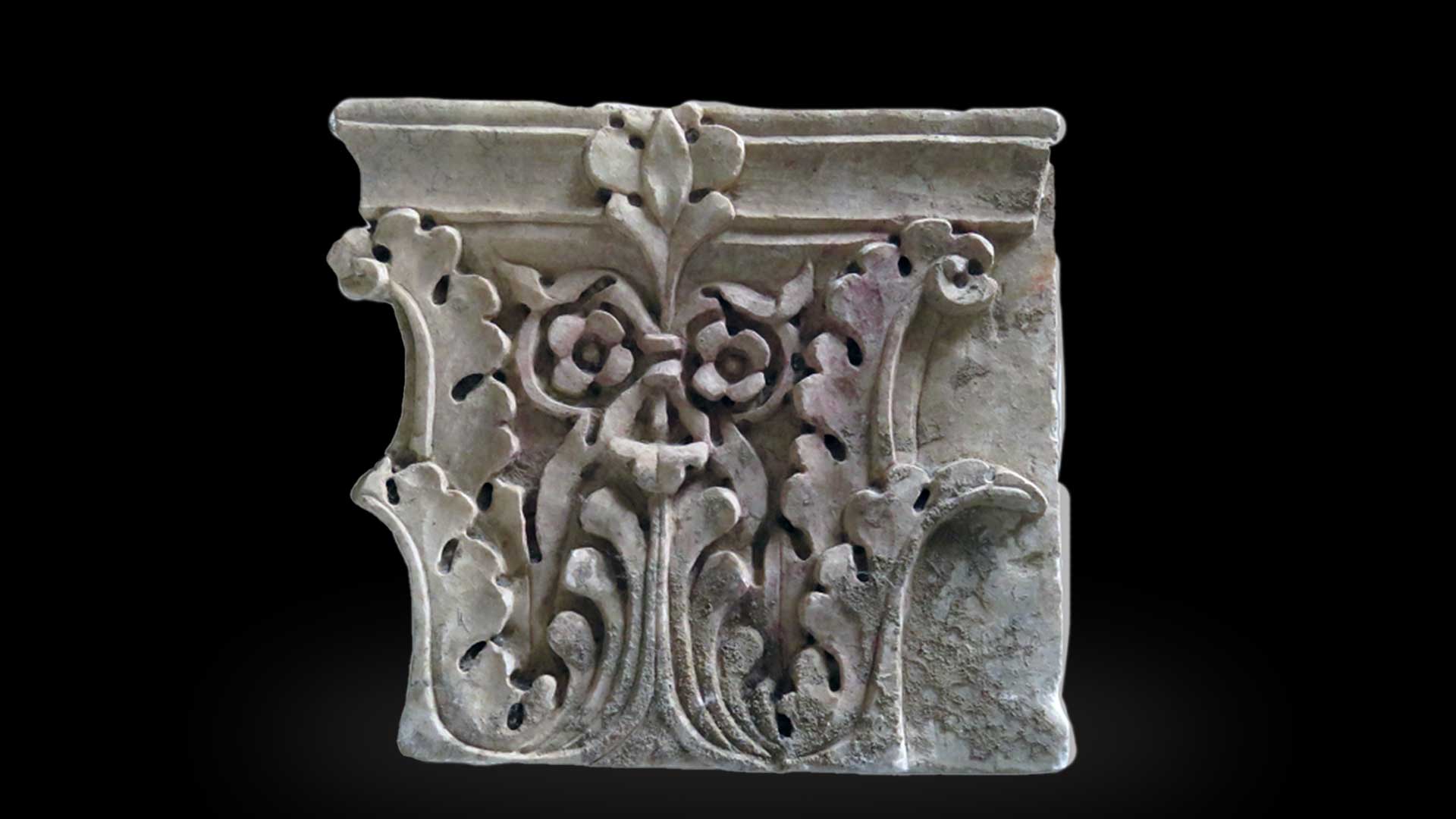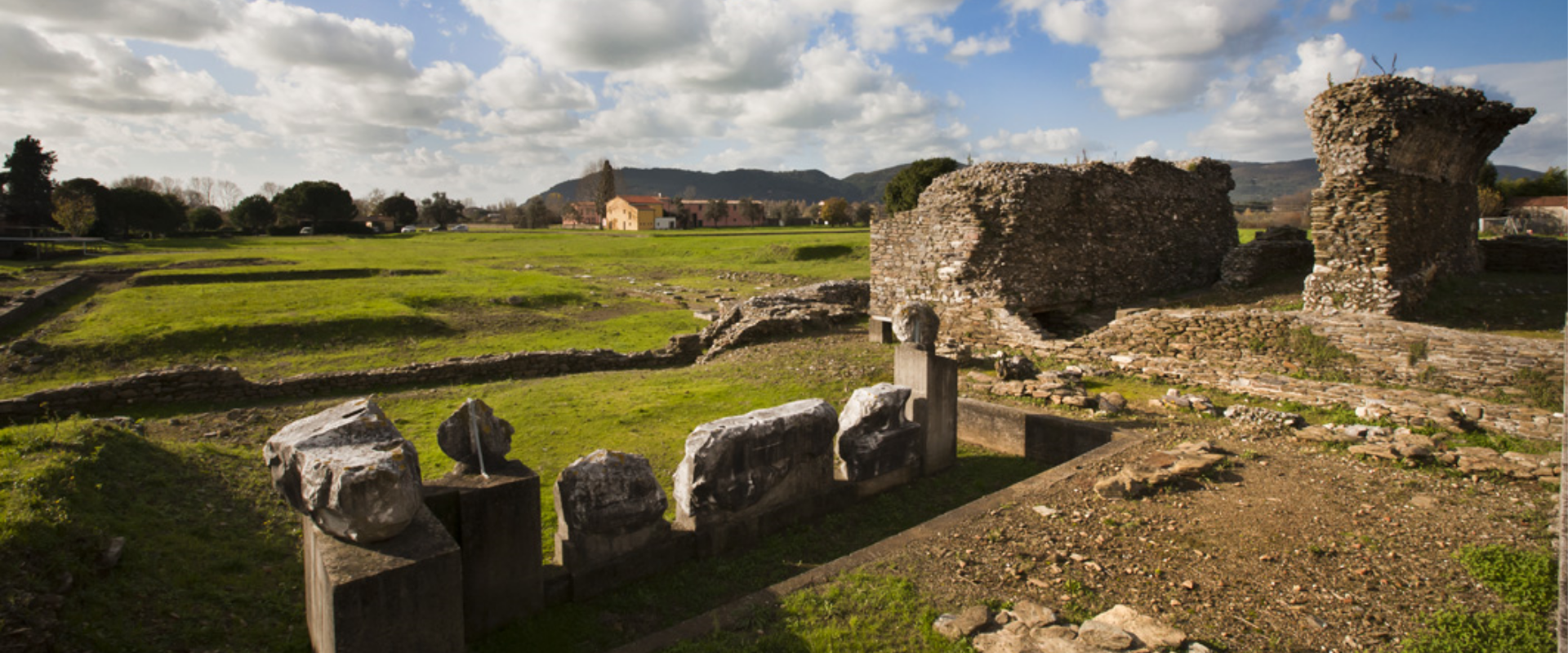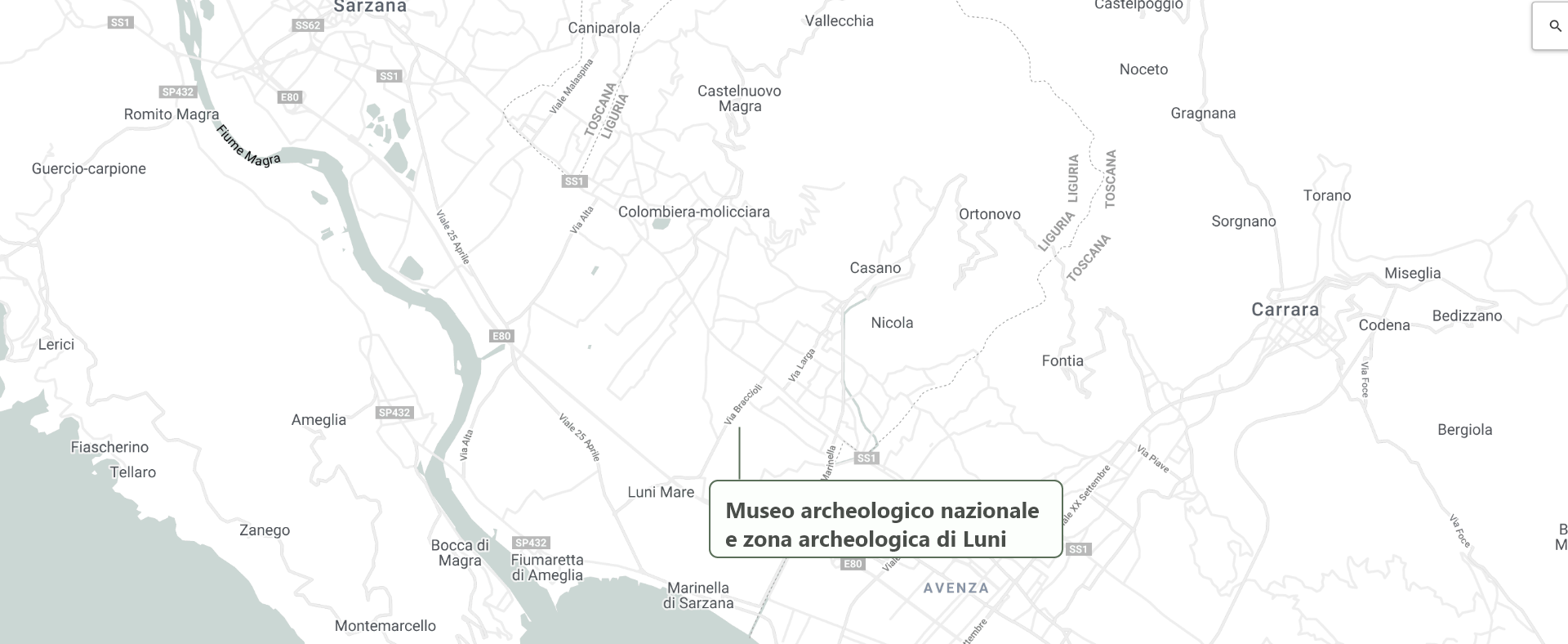Esplora per
Tipologia
Architettura
Materiale
Marmo
Dimensioni
Height: 22 cm; width: 21 cm; thickness: 3.5 / 2.8 cm
Epoca
Età imperiale
Cronologia
Claudian-Neronian period
Provenienza
Theatre
Sede espositiva
Museo
Inventario
RCGE 55435
Corinthianizing pilaster capital
The vegetal ornamentation features, at the center of the first crown, a nine-lobed palmette. On either side, arranged in two tiers, are acanthus-like leaves shown in profile.
From each side of the palmette extend vegetal stems, wrapped in bracts and tied at the center with a double ribbon. The ends of the stems form volutes, each enclosing a four-petaled flower with a central button, creating the so-called lyre motif.
A well-developed rim of the kalathos marks the transition to the abacus tablet, which is composed of a rounded molding (torus) and a deep concave molding (cavetto).
Traces of red pigment are visible on the surface.






